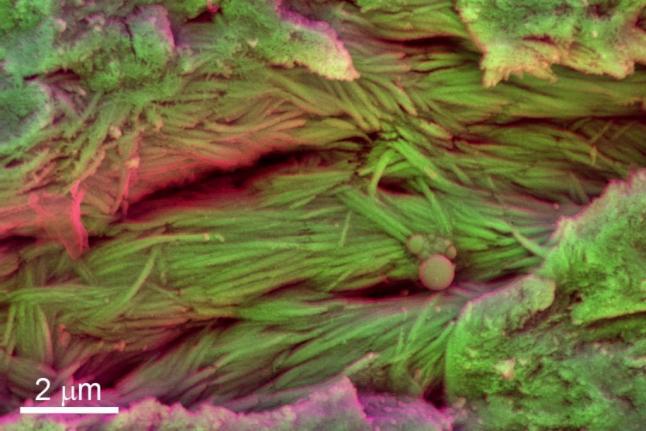
Poorly Preserved Fossil Features Evidence of Dino Blood

LONDON, June 9 (UPI) — Researchers at Imperial College London believe they’ve identified red blood cells and collagen fibers in a poorly preserved dinosaur bone.
It’s not the first time researchers have located dino blood, but if the latest discovery is confirmed, it may suggests preserved soft tissue is more abundant than previously thought.
“Although remnants of soft tissues have previously been discovered in rare, exceptionally preserved fossils,” lead researcher Susannah Maidment explained in a press release, “what is particularly exciting about our study is that we have discovered structures reminiscent of blood cells and collagen fibres in scrappy, poorly preserved fossils.”
[one_fourth]
[/one_fourth][three_fourth_last]
Maidment, a researcher fellow in the college’s Department of Earth Science and Engineering, is the lead author of a new study on the bones, published this week in the journal Nature.
The rib bone in question is part of a collection of fossils belonging to various unidentified Cretaceous-era dinosaurs. Researchers found the soft tissue using a range of imaging techniques, including new electron microscopy scanning methods. The scientists also used a focused ion beam to slice into the tissue and study its internal structures.
Imaging results were compared to microscopy scans taken of tissue collected from an Emu. The similarities between the structures of the bird and dino blood cells and soft tissues have researchers believing their suspicions are correct — they have indeed found soft tissue.
But the scientists acknowledge more research is needed to confirm the findings.
If they’re right, the discovery could help researchers better understand how dinosaurs acquired warm-blooded, bird-like metabolism.
“Early indications suggest that these poorly preserved fossils may be useful pieces in the dinosaur jigsaw puzzle to help us to understand in more detail how dinosaurs evolved into being warm blooded creatures, and how different dinosaur species were related,” Maidment said.





